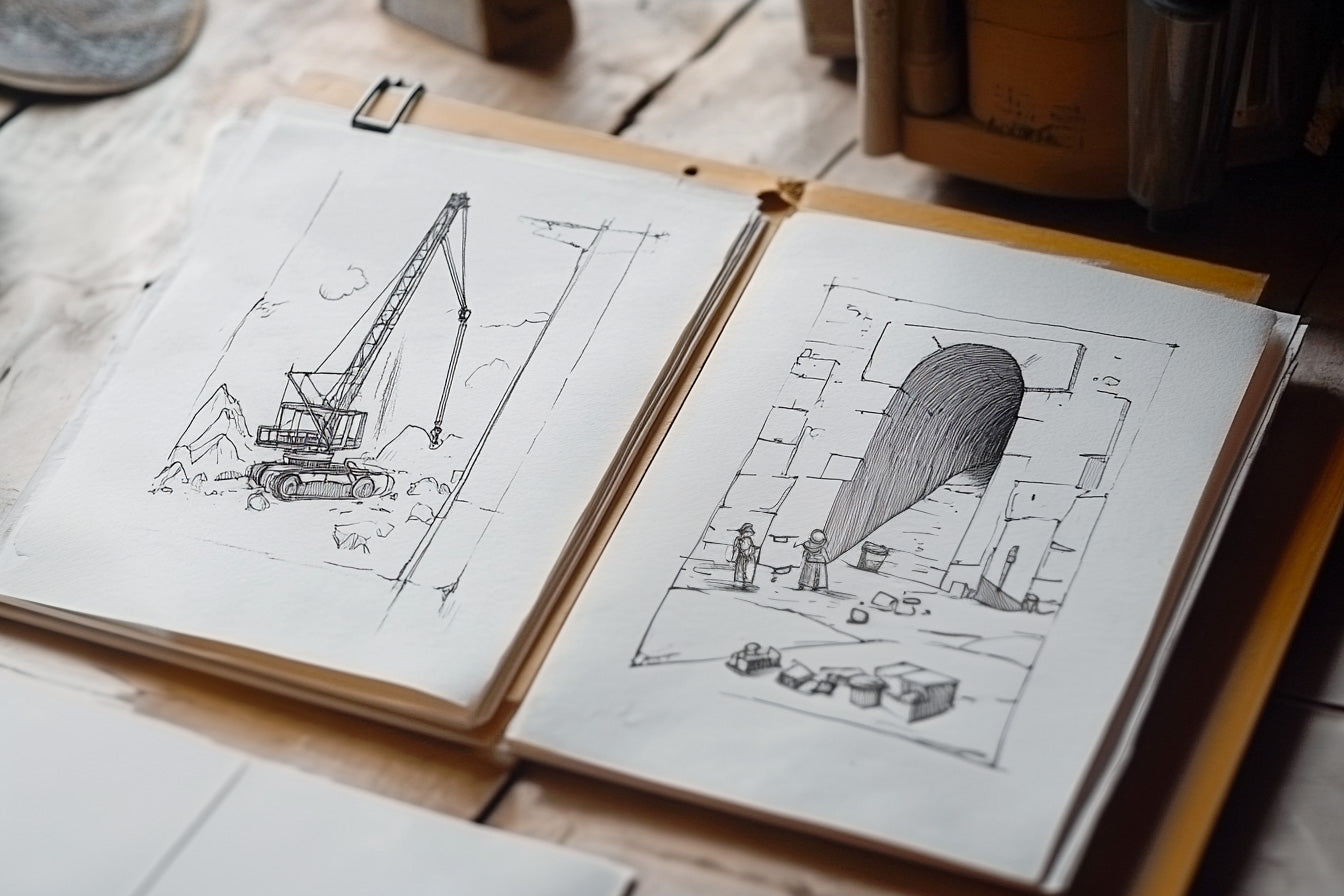Purpose
Imagine walking into a supermarket and going to the isle dedicated to sweets and chocolates. Here, you are likely to find a section with a variety of block chocolate bars. These are often presented as a package in the form of a rectangle which are usually the same standard size. Most often people go after brands they already recognise. Or perhaps they go for certain flavours or zoom in on 85% dark chocolates and above. This narrows down the search and they quickly decide which chocolate to pick.
However, suppose you go to an upmarket supermarket or specialist chocolate shop where you are presented with many chocolate bars that you don’t recognise. A good example is going to Whole Foods supermarket (which is now owned by Amazon). If you have a local branch, pop in one day and see the chocolate section for yourself. You will see a large selection of chocolate bars that you have never seen before, all claiming to be high-quality, tasty, organic and made from beans in some tropical country. The only differentiator is the price and the design of the chocolate wrap.
This is the dilemma every chocolate manufacturer has: how to design the chocolate packaging to sell. If you were a chocolate manufacturer, you want to get this design and pricing right. In the absence of brand recognition, they are the only things you have that makes the difference between a purchase and a pass.
The aim of this exercise is to help delegates practice various aspects of design that goes into making chocolate bar packaging. We will ignore the pricing part and instead focus on design. If all prices were the same, which chocolate bar will a customer choose?
This exercise is ideal for teambuilding scenarios where delegates are involved in design or marketing. You can then cover a large set of topics under a single exercise, such as product design, teamwork, leadership, resource management, marketing and artistic design. It is also great for kids and young delegates.
You can use this exercise in art courses and focus mainly on design aspects and product packaging. In short, there are many applications and you can use the instructions provided here as a template and tailor it to your own needs.
Objective
Design a block chocolate bar cover (front and back) that has the highest chance to sell, irrespective of its price.
What You Need
- A variety of assorted papers. Provide a selection of papers with various thickness, texture, tone and feel.
- A choice of:
- Traditional media, such as colour pencil, watercolour, pastel and crayons.
- Software and computers for digital media, such as Adobe Photoshop, Illustrator, etc.
- Access to an inkjet printer. Whether the cover is designed using traditional media or digitally, all designs must be printed on paper as this is how any chocolate bar eventually comes to market. It is best if you provide papers that can be printed on.
- Cardboards in the exact size of the target chocolate bar. This will act as the actual chocolate that’s usually wrapped in aluminium. The objective is to create a cover for this bar. Let’s use Lindt Excellence chocolate bars as a standard example for size. Cut the cardboards to 7.5 in x 3.5 in (19 cm x 9 cm). Thickness is about 7mm. You need as many of these cardboards as competing teams or delegates.
- Prize
Setup
- Choose whether this exercise is carried out using traditional media or is digitally designed. Based on this choice provide appropriate materials. Alternatively, you can provide this as a design choice.
- Explain that the objective of the exercise is to design the cover of a chocolate bar. They will need to create designs for the front and back.
- You have a choice of running the exercise as a competition between teams or individuals. If running as teams, divide them into groups.
- Explain that teams will be using the materials provided to produce a finished product.
- Indicate the precise dimensions of the target design (see above). They should be able to print this on a single sheet that is large enough that could be wrapped around the chocolate bar. You can present a Lindt chocolate bar and unwrap the cover to show how it is designed.
- Explain that they must consider a variety of design elements. They should then combine them into an actual cover that is either hand-made or created digitally. All designs are then printed on paper (using quality thick paper) and the teams then wrap them around the cardboard chocolate bars.
- At the end, all chocolate bars with their designed packages are presented to an independent audience. The audience will review and vote which design they like the most. The winning design is the one with the highest votes.
- If you are running the exercise as a team building activity, the independent audience can be any staff member who is not participating in the exercise. They should be told that they are judging only based on design, not list of ingredients or unrelated aspects.
- Present the chocolate bars in the canteen area and get staff to vote on them. The easiest way to handle this is to place an opaque jar/box next to each chocolate bar design and give one and only one plastic coin to each voter. Voters can drop the coin in the jar of their favourite chocolate design. The jars must be opaque so that social proof does not influence the results.
- You can leave the designs in the canteen area for several days while collecting votes. This way even external visitors can also participate. It would make their visits more memorable too.
- Make sure you provide a comments notebook nearby so voters can write comments about the designs they like, or dislike.
- Declare the winner formally and give a prize. Let the audience know who won.
- While going through the exercise, each competitor must make many decisions on a variety of areas. Here are the main parameters:
-
Branding
- Brand Name
- Slogan
- Flavours
- All text appearing on the front
- All text appearing on the back. May include further marketing blurb as well as ingredients, etc. (Note: Some content on the back of a product is legally required. This is out of scope for this exercise. The aim is to focus on design aspects that help sell a product. If designers need to fill up the back with text and elements so that the bar resembles a real one, they can copy from an existing product. The assessing audience should be told that this text should not be judged and is out of scope.)
-
Design
- Font and text styling
- Visual characteristics
- Background and overall packaging colour
- Images or illustrations used as part of the design
-
Physical Design
- Type of paper
- Wrapping technique. You can optionally include the wrapping technique as part of the overall design. Some chocolate bars feel nice just because of the way they are wrapped.
-
Branding
- This activity can take a substantial amount of time, perhaps several hours. Hence, it can also be given as an assignment so competitors can carry out research and test designs. In a final session, they can use the materials you provide to produce the final chocolate bar packaging, ready for presentation to a judging audience.
- Once the bars are voted for and the winner is declared, bring everyone back to a final session. Consider the top three designs that got most votes and go over them. Ask delegates to comment why these designs have attracted so many votes and what they can learn from them. Encourage a discussion on various design elements.
Timing
Explaining the Exercise: 15 minutes
Activity: Several hours, perhaps over multiple sessions
Group Feedback: 30 minutes
Discussion
Which design elements were critical to get right? Which design elements did not have a material effect? How important was the text? How important were the physical characteristics of the chocolate bar, the feel of the paper, etc? What were the comments made by the judging audience and what did they suggest?
If you were to map the findings of this exercise and apply it to the designs of products of your own company, what would they suggest?
Variations
You can skip digital design and printing altogether. Instead, provide art materials and expect people to design the covers using traditional media in any way they want. Here, you can bias the exercise towards resource management, leadership and teamwork. You can limit the time available for the task to get teams race against time and see how they handle working under pressure.
Soft Skills Training Materials
Get downloadable training materials
Online Train the Trainer Course:
Core Skills
Learn How to Become the Best Trainer in Your Field
All Tags
Training Resources for You

Course Design Strategy
Available as paperback and ebook

Free Training Resources
Download a free comprehensive training package including training guidelines, soft skills training activities, assessment forms and useful training resources that you can use to enhance your courses.

Our Comprehensive Guide to Body Language

Train the Trainer Resources
Get Insights - Read Guides and Books - Attend Courses
Training Materials
Get downloadable training materials on: Management Training, Personal Development, Interpersonal Development, Human Resources, and Sales & Marketing














Leave a comment
All comments are moderated before being published.
This site is protected by hCaptcha and the hCaptcha Privacy Policy and Terms of Service apply.